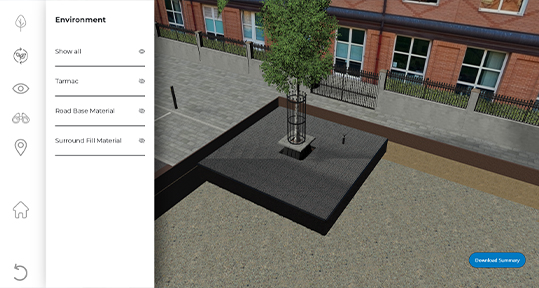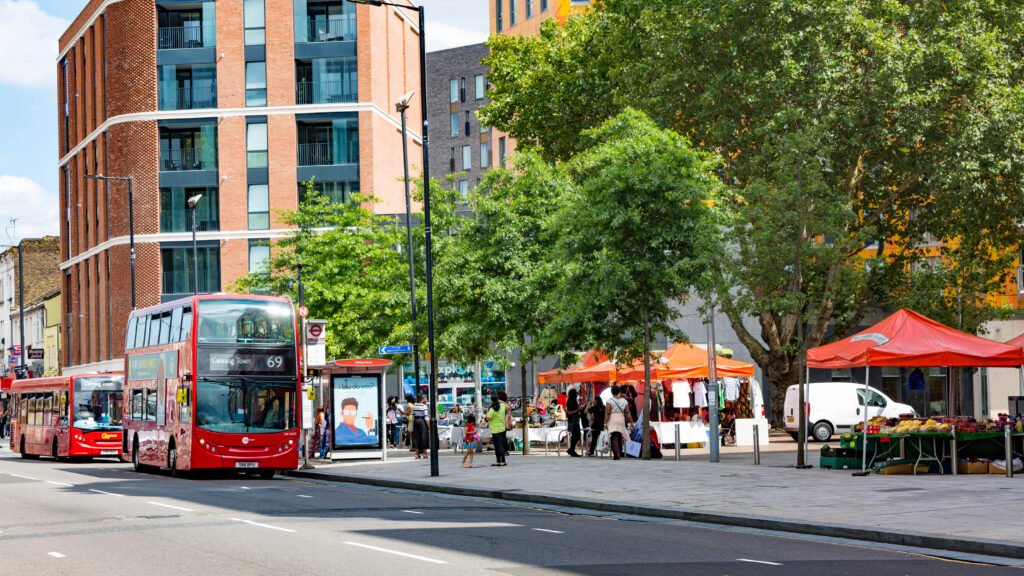Crawley, well known for being one of the New Towns set up after the second World War, is actually an ancient town. Situated in the Weald – the dip in between the North and South Downs in the South of England – the town sits on sandstone and clay, and ironworking and mineral extraction has taken place for over 2000 years.
Crawley, well known for being one of the New Towns set up after the second World War, is actually an ancient town. Situated in the Weald – the dip in between the North and South Downs in the South of England – the town sits on sandstone and clay, and ironworking and mineral extraction has taken place for over 2000 years.
The Weald was thickly forested, in fact Weald means forest in Old English, and these trees were central to ironworking. Furnaces were set up all around the Weald, with easy access to iron ore in the clay and sandstone, and available wood for the charcoal fires, and became a mainstay of the Crawley economy – with some of these establishments close to the town centre.
The town prospered in the 18th century when the turnpike road from London to Brighton passed through the centre of the town, and again when the London to Brighton railway was completed one hundred years later, and a station was constructed close to the current town centre. The Second World War saw a new airfield built near the site of the old racecourse, which became Gatwick Airport, opened by the Queen in 1958.
Project
Location
Contractor
Landscape Architect
Crawley, well known for being one of the New Towns set up after the second World War, is actually an ancient town. Situated in the Weald – the dip in between the North and South Downs in the South of England – the town sits on sandstone and clay, and ironworking and mineral extraction has taken place for over 2000 years.
Crawley, well known for being one of the New Towns set up after the second World War, is actually an ancient town. Situated in the Weald – the dip in between the North and South Downs in the South of England – the town sits on sandstone and clay, and ironworking and mineral extraction has taken place for over 2000 years.
The Weald was thickly forested, in fact Weald means forest in Old English, and these trees were central to ironworking. Furnaces were set up all around the Weald, with easy access to iron ore in the clay and sandstone, and available wood for the charcoal fires, and became a mainstay of the Crawley economy – with some of these establishments close to the town centre.
The town prospered in the 18th century when the turnpike road from London to Brighton passed through the centre of the town, and again when the London to Brighton railway was completed one hundred years later, and a station was constructed close to the current town centre. The Second World War saw a new airfield built near the site of the old racecourse, which became Gatwick Airport, opened by the Queen in 1958.
Project
Location
Contractor
Landscape Architect
Project
Location
Contractor
Landscape Architect
The earliest type of furnace used to smelt iron was called a bloomery. These produced a porous mass of iron and slag, and were used widely during the Middle Ages. On the site of one of these, just west of the High Street, a new residential development was proposed consisting of a 5 storey apartment block with car parking behind, landscaped from the road frontage and with a boulevard of trees in between the building and the car park.
Trees planted in hard paving historically have not always been successful; this is usually due to impermeable surfacing and the compaction of the layer works – both creating non-root friendly conditions. To make sure that these trees succeed in this high quality development, GreenBlue Urban worked with the Landscape Architect, John W Platts, and helped with the specification for the tree pits.
The GreenBlue Urban ArborSystem was specified, supplied and installed in the hard paved area. This solution incorporated the StrataCell soil cell system, the Arborvent 100 double inlet aeration system, a Root Director, the Arborguy underground guying system and the twin wall geonet system which prevents long term layer work subsidence. The above ground protection system consists of a Pre-Cast Arboresin tree grille combined with an Ullswater vertical guard – a strong defence against any accidental damage. The tree guard tie at the top of the vertical guard makes sure that the tree is kept central as it grows too. Porous paving completes the surfacing, which is greatly helpful to the trees, as it maximises the infiltration of water into the rooting zone.
The earliest type of furnace used to smelt iron was called a bloomery. These produced a porous mass of iron and slag, and were used widely during the Middle Ages. On the site of one of these, just west of the High Street, a new residential development was proposed consisting of a 5 storey apartment block with car parking behind, landscaped from the road frontage and with a boulevard of trees in between the building and the car park.
Trees planted in hard paving historically have not always been successful; this is usually due to impermeable surfacing and the compaction of the layer works – both creating non-root friendly conditions. To make sure that these trees succeed in this high quality development, GreenBlue Urban worked with the Landscape Architect, John W Platts, and helped with the specification for the tree pits.
The GreenBlue Urban ArborSystem was specified, supplied and installed in the hard paved area. This solution incorporated the StrataCell soil cell system, the Arborvent 100 double inlet aeration system, a Root Director, the Arborguy underground guying system and the twin wall geonet system which prevents long term layer work subsidence. The above ground protection system consists of a Pre-Cast Arboresin tree grille combined with an Ullswater vertical guard – a strong defence against any accidental damage. The tree guard tie at the top of the vertical guard makes sure that the tree is kept central as it grows too. Porous paving completes the surfacing, which is greatly helpful to the trees, as it maximises the infiltration of water into the rooting zone.
The maturing Prunus “Sunset Boulevard” trees are now bringing amazing benefits to the residents of this development. These healthy canopies are not only creating a pleasant looking space, but also attenuating storm water in rain events, cooling the air during heat waves, helping remove air pollution and bringing extra biodiversity to the area. They are also assisting with the retention of the value of the building, protecting the investment of the owners, and as the trees continue to grow, they will continue to add value to the whole area.
The maturing Prunus “Sunset Boulevard” trees are now bringing amazing benefits to the residents of this development. These healthy canopies are not only creating a pleasant looking space, but also attenuating storm water in rain events, cooling the air during heat waves, helping remove air pollution and bringing extra biodiversity to the area. They are also assisting with the retention of the value of the building, protecting the investment of the owners, and as the trees continue to grow, they will continue to add value to the whole area.






